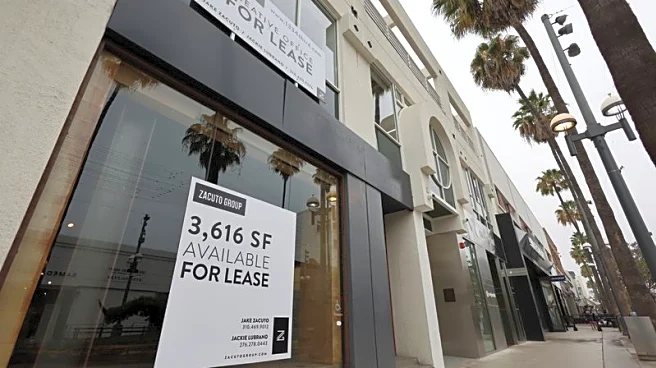By Niket Nishant and Manya Saini
(Reuters) -U.S. regional banks' commercial real estate loan books are proving broadly resilient despite worries sparked by a handful of soured loans, but the office sector
continues to be a pain point, analysts said.
At least eight mid-sized and regional U.S. banks reported lower non-performing loans (NPLs) — loans on which borrowers missed scheduled payments — in their CRE portfolios in the third quarter compared with a year ago, a Reuters analysis of earnings reports showed.
Commercial real estate, mainly office loans, have been under pressure since the COVID-19 pandemic overhauled working habits, and return-to-office mandates have not yet translated into a meaningful rebound in office real estate demand.
Nearly a dozen lenders said they have reduced their concentration of office loans. Flagstar Bank, formerly New York Community Bank, whose CRE troubles sparked a sector-wide crisis of confidence last year, reduced its allowances for credit losses tied to its office portfolio by 142 basis points in the third quarter.
Regions Financial, meanwhile, said office loans drove its third-quarter charge-offs, though it expects to resolve those exposures soon.
M&T Bank also said it plans to continue trimming its office loan portfolio, while Citizens Financial said its office balance declined modestly in the third quarter.
Office property loans are falling behind at record levels, with more than 11.76% now delinquent, data from Trepp showed.
"There is a profound change in the way people work. Office vacancy rates are higher than they were even post the global financial crisis. We definitely haven't worked through all of the office issues," said Thomas Mason, principal analyst at S&P Global.
The challenges are more acute for regional banks which have a higher proportion of CRE loans on their books compared with the global lenders.
Investor fears over regional banks' CRE exposure were reignited last month when fears of a trouble in the credit markets sparked a selloff across the sector.
Lenders have been buying time by extending loans and hoping that interest-rate cuts by the Federal Reserve will ease pressure on borrowers, but it is unclear how long that strategy can last with a December cut now in doubt.
CRE loan pricing tends to follow longer-term Treasury yields rather than short-term policy rates, which means Fed rate cuts take time to filter through.
Even with two cuts since mid-September, new CRE loans issued in 2025 will carry an average interest rate of 6.24%, compared with 4.76% on loans that mature this year, according to S&P Global.
Roughly $936 billion of U.S. CRE mortgages are set to mature next year, 18.6% higher than in 2025, with maturities expected to peak at $1.1 trillion in 2029, according to S&P Global Market Intelligence estimates.
"Approximately one-fifth of all maturing commercial real estate loans in 2025 are expected to be office loans," Ermengarde Jabir, director of economic research at Moody's Analytics told Reuters.
"Property types like office have yet to 'recover' and are still posting increasing vacancy rates," she said.
BIOTECH REAL ESTATE PAIN
While office remains the industry's pressure point, landlords and lenders are tightening terms for life sciences real estate as biotech funding slows and fewer companies in the sector are able to tap public markets.
"A lot of companies, especially small and mid-sized biotechs, have put expansion plans on hold," said Vikram Malhotra, senior equity research analyst at Mizuho Americas.
"These tenants typically operate with four to six quarters of cash runway, but after missing a fundraising round or two, some are running out of money."
The overall lab vacancy rate across the top 13 life sciences markets in the country rose to 22.7% in the second quarter, up 1.2 percentage points from the previous quarter, CBRE data showed.
BANKS STILL DEEP IN CRE
While commercial banks have scaled back CRE lending and sold off portfolios to private credit firms, they still held the largest share of commercial or multifamily mortgages at 38%, totaling $1.8 trillion, according to second quarter data from the Mortgage Bankers Association.
Provisions for loan losses in 2026 could rise to 24% of net revenue, compared with 20.8% this year, wrote Nathan Stovall, director of financial institutions research at S&P Global in a note.
"Banks have arguably benefited from private credit firms growing their market share in CRE. But the industry is not completely out of the woods," he wrote.
(Reporting by Niket Nishant and Manya Saini in Bengaluru; Editing by Michelle Price and Arun Koyyur)












